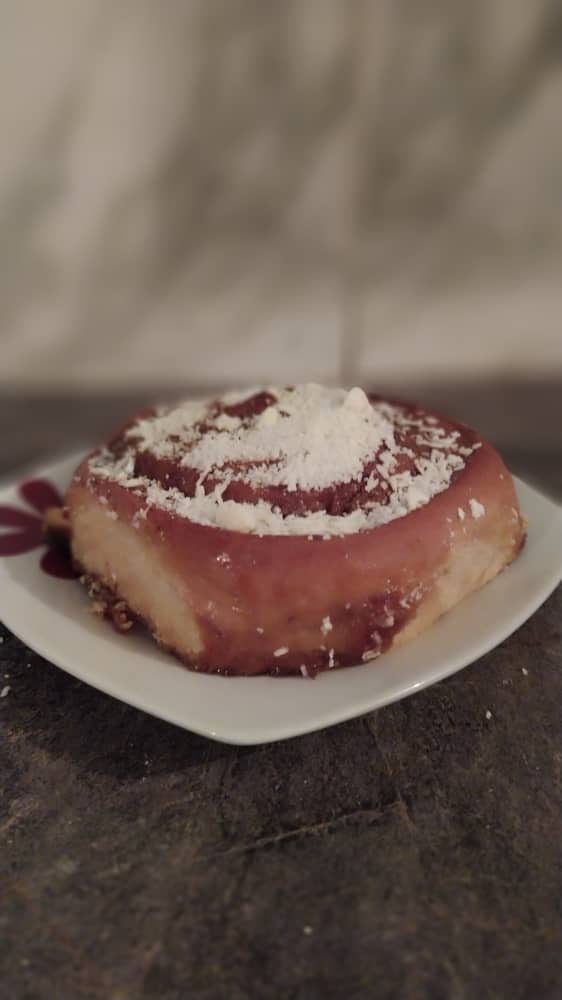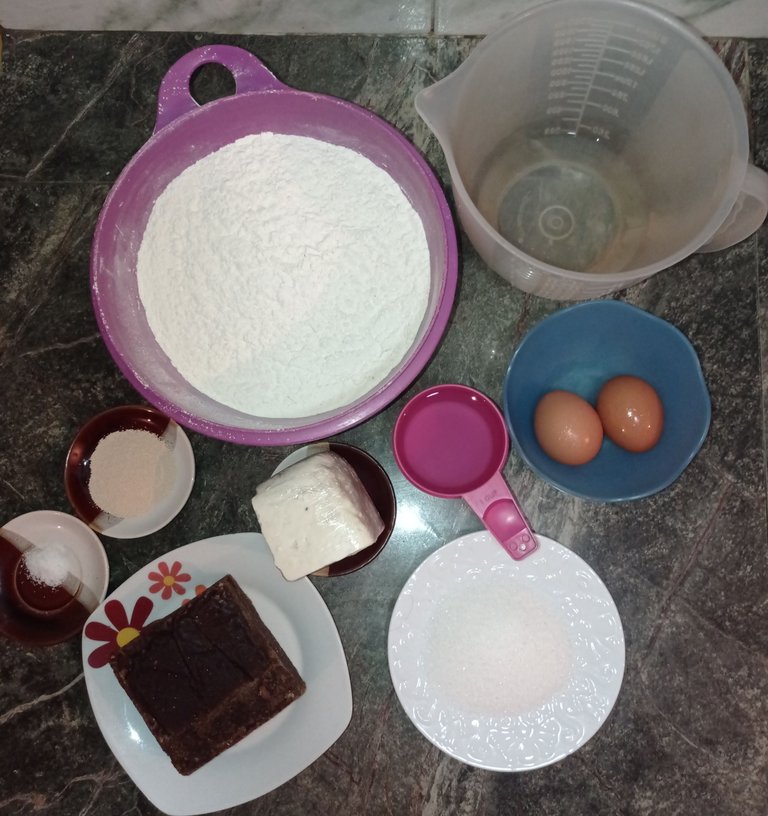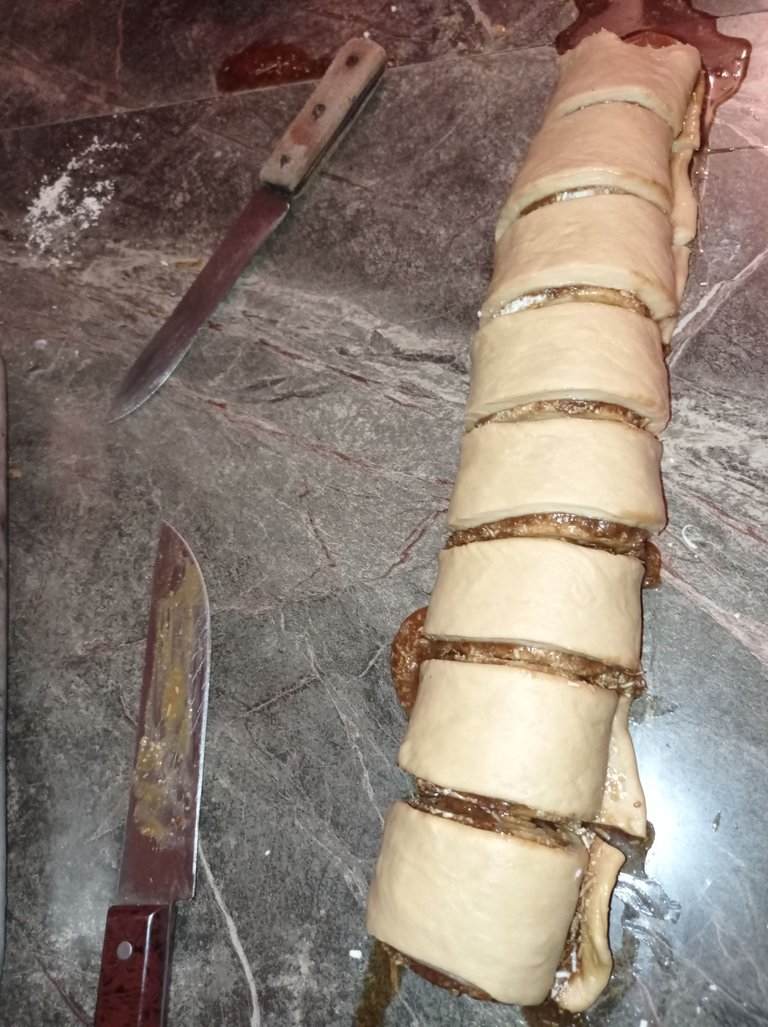
ESPAÑOL
Hola comunidad de foodies! Esta es la primera ocasión en la que escribo en esta comunidad. Gracias a la comunidad de OCD (@ocd) por dejarnos participar en este concurso sobre la comida típica de nuestro país.
En esta ocasión hablaré sobre historia y preparación de un postre muy conocido en mi país, Venezuela, y aunque sus orígenes son humildes su sabor y forma de expansión por todo el país es única. El postre del que les hablo es el GOLFEADO.
ENGLISH
Hello foodie community! This is the first time I write in this community. Thanks to the OCD community (@ocd) for letting us participate in this contest about the typical food of our country.
This time I will talk about the history and preparation of a very well known dessert in my country, Venezuela, and although its origins are humble, its flavor and way of spreading throughout the country is unique. The dessert I am talking about is the GOLFEADO.

El golfeado es un tipo de pan dulce muy común en la gastronomía de Venezuela, sus orígenes se ubican en la capital de la nación Caracas, específicamente en la población de Petare. A pesar de que hoy en día es la zona barrial más grande en Latinoamérica, a principios del siglo XX era un pueblo un poco alejado de otras zonas pobladas, al cual llegaban viajeros para abastecerse de productos y continuar su viaje.
El famoso postre fue creado en la "Panadería Central" ubicada en la calle Libertad de Petare por los hermanos Genaro y Maria Duarte y se preparaba en horno de leña. A pesar de ser muy parecidos a los rollos de canela, la sencilla preparación y gran sabor de este postre hizo que en menos de un siglo se encontrara en cada una de las panaderías del país.
The golfeado is a type of sweet bread very common in the gastronomy of Venezuela, its origins are located in the nation's capital Caracas, specifically in the town of Petare. Although today it is the largest neighborhood in Latinamerica, at the beginning of the 20th century it was a town a little far from other populated areas, where travelers arrived to stock up on products and continue their journey.
The famous dessert was created in the "Central Bakery" located on Libertad Street in Petare by siblings Genaro and Maria Duarte and was prepared in a wood-fired oven. Despite being very similar to cinnamon rolls, the simple preparation and great taste of this dessert made it to be found in every bakery in the country in less than a century.
Para su preparación se necesitan los siguientes ingredientes.
- 1 Kg de harina de trigo leudante
- 1 y 1/2 panelas de papelón (600 g) tanto para el jarabe como para el armado del rollo
- 2 huevos
- 75g de azúcar
- 20g de levadura
- 100g de Margarina
- 1/4 de queso blanco (250g)
- 1/2 cucharadita de sal (o una pisca)
- 200ml de agua
- 200ml de agua aparte para la realización del jarabe de papelón.
For its preparation the following ingredients are needed.
- 1 Kg of leavening wheat flour
- 1 and 1/2 panelas de papelón (600 g) both for the syrup and for the assembly of the roll.
- 2 eggs
- 75g of sugar
- 20g of yeast
- 100g of margarine
- 1/4 white cheese ( 250g )
- 1/2 teaspoon salt ( or a pinch )
- 200ml of water
- 200ml of water apart for the preparation of the syrup.

Para comenzar su preparación necesitamos que todos los ingredientes estén a temperatura ambiente.
Comenzamos con el jarabe de papelón. Primero romperemos la panela de papelón en trozos. Los pondremos a calentar a fuego lento con los 200ml de agua. No hay que olvidar que tenemos que estar moviendo constantemente para que caramelice. Hay continuar hasta que todo el papelón se haya disuelto y se haya reducido un poco. Una vez listo lo colocamos de lado para que baje su temperatura.
Sin perder tiempo, empezaremos el proceso del pre-fermento
En este proceso tibiaremos los otros 200ml de agua la cual pondremos en un contenedor y le agregaremos la levadura, la mitad de la azucar y 1/2 taza de la harina previamente pesada lo batiremos hasta integrarlos. Luego se tapa herméticamente, se coloca en un sitio oscuro, sin recibir viento y la dejaremos reposar durante 25 minutos.
To start its preparation we need all the ingredients to be at room temperature.
We begin with the papelón syrup. First we will break the panela de papelón into pieces. We will put them to heat over low heat with the 200ml of water. Do not forget to stir constantly to caramelize. Continue until all the paprika has dissolved and reduced a little. Once it is ready, turn it on its side to lower its temperature.
Without wasting time, we will start the pre-fermenting process.
In this process we will warm the other 200ml of water which we will put in a container and we will add the yeast, half of the sugar and 1/2 cup of the flour previously weighed, we will beat it until integrating them. Then we cover it hermetically, place it in a dark place, without wind and let it rest for 25 minutes.

Mientras pasa el tiempo tomaremos nuestros 100g de margarina, los derretiremos a fuego lento, muy cuidadosamente evitando que se queme. También para hacer tiempo rallaremos por completo nuestro queso, romperemos los huevos hasta ver una mezcla homogénea y rallaremos la media panela restante.
Trascurridos los 25 minutos el pre fermento debe haber crecido. Vamos a tomar todos nuestros ingredientes y realizaremos un volcán en el siguiente orden.
Primero harina, segundo nuestra pizca de sal, tercero el resto de nuestra azúcar y dentro del volcán colocaremos la mantequilla previamente derretida, los dos huevos ya unificados, 1/2 taza de jarabe de papelón y nuestro pre fermento.
While the time passes we will take our 100g of margarine, we will melt them to slow fire, very carefully avoiding that it burns. Also to make time we will grate our cheese completely, we will break the eggs until we see a homogeneous mixture and we will grate the remaining half panela.
After 25 minutes the pre-ferment should have risen. We will take all our ingredients and make a volcano in the following order.
First flour, second our pinch of salt, third the rest of our sugar and inside the volcano we will place the previously melted butter, the two eggs already unified, 1/2 cup of paprika syrup and our pre-ferment

En maquina son solo 10 minutos de unificación, a mano serian 15 o 20 min. Se debe incorporar hasta que la masa no se deshaga al tacto. Se puede incorporar harina de contacto en cantidades mínimas en caso de ser necesario. Se recomienda untar una pequeña cantidad de margarina en las manos para hacer contacto con la masa.
Una vez lista se coloca a reposar y crecer en un recipiente de por lo menos el doble de nuestra masa. Debe ser tapado y colocado fuera de cualquier corriente de aire durante 30 minutos. En mi caso me ayudé con máquina, pero se puede hacer perfectamente a mano.
In the machine it takes only 10 minutes of unification, by hand it would be 15 or 20 minutes. It should be incorporated until the dough does not fall apart to the touch. Contact flour can be added in small quantities if necessary. It is recommended to spread a small amount of margarine on the hands to make contact with the dough.
Once ready, it is placed to rest and grow in a container at least twice the size of our dough. It should be covered and placed out of any draft for 30 minutes. In my case I used a machine, but it can be done perfectly well by hand

Transcurrido ese periódo de tiempo ubicaremos nuestra masa en un mesón y amaseremos de dos a cinco minutos para reactivar la masa luego la extenderemos hasta obtener un grosor aproximado de medio centímetro. Deben estirarse de forma rectangular para que nuestra masa pueda rendir. Luego con una brocha extenderemos una capa de jarabe de papelón, seguido de una generosa capa de papelón rayado y una capa de queso rallado.
After that period of time we will place our dough on a counter and knead it for two to five minutes to reactivate the dough, then we will extend it to obtain a thickness of approximately half a centimeter. They should be stretched in a rectangular shape so that our dough can yield. Then with a brush we will spread a layer of syrup of papelón, followed by a generous layer of grated papelón and a layer of grated cheese.

Procederemos a enroscar nuestra masa con mucho cuidado de no romperla, este paso no debe ser apresurado. Una vez enroscada nuestra masa la cortaremos en secciones de tres dedos de grosor. Deben salir de nueve a diez porciones y estas deben ser colocadas en una bandeja más alta que nuestros rollos a una distancia de tres centímetros de largo entre cada uno. Al ser colocados se debe aplastar un poco y la bandeja debe estar previamente untada con margarina.
Ya ordenados nuestros rollos deben ponerse a reposar durante 30 minutos. Una vez transcurridos los treinta minutos le colocaremos el jarabe de papelón a la bandeja hasta que el líquido se aproxime a la mitad del rollo y lo colocaremos en nuestro horno pre calentado durante 45 minutos.
We will proceed to roll our dough with great care not to break it, this step should not be rushed. Once the dough is rolled, cut it into three-finger-thick sections. Nine to ten portions should come out and these should be placed in a tray higher than our rolls at a distance of three centimeters long between each one. When they are placed they should be flattened a little and the tray should be previously greased with margarine.
Once our rolls have been arranged, they should be left to rest for 30 minutes. Once the thirty minutes have elapsed, add the syrup to the tray until the liquid comes close to the middle of the roll and place it in our preheated oven for 45 minutes.
HORNEADO
Antes de que se hornee por completo debemos barnizarlo de 2 a 3 veces con lo que resta de nuestro jarabe de papelón. El postre está listo cuando el jarabe se haya reducido. Nuestro golfeado se verá de un color dorado y no será difícil separarlo de nuestra bandeja. Luego agregaremos el resto de nuestro queso al gusto y von apetite. Ya tenemos nuestros golfeados.
BAKING
Before it is completely baked, we must glaze it 2 to 3 times with the rest of our paprika syrup. The dessert is ready when the syrup has reduced. Our golfeado will look golden brown and it will not be difficult to separate it from our tray. Then we will add the rest of our cheese to taste and von apetite. Now we have our golfeados.


Si alguien tiene alguna duda puede preguntar perfectamente en los comentarios que yo le responderé y resolveré su duda. Sin nada más que decir, me despido . BYE !!!!
If anyone has any questions you can ask perfectly well in the comments that I will answer and solve your doubt. With nothing more to say, I bid you farewell. BYE !!!!
Cover and farewell edited on Canva
Portada y despedida editada en Canva
Text translated by DeepL
Texto traducido por DeepL
All images are mine
Todas las imágenes son mías

Hasta ahora no hemos probado el Golfeado, pero, lo que sí podemos comprobar con esta publicación, es que su proceso de elaboración lleva varios pasos, que tú has explicado muy bien.
Realmente delicioso.
Congratulations @georgerivas! You have completed the following achievement on the Hive blockchain and have been rewarded with new badge(s) :
Your next target is to reach 700 upvotes.
Your next target is to reach 50 replies.
You can view your badges on your board and compare yourself to others in the Ranking
If you no longer want to receive notifications, reply to this comment with the word
STOPCheck out the last post from @hivebuzz:
Support the HiveBuzz project. Vote for our proposal!